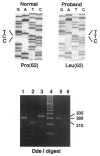Abstract
A deficiency in uroporphyrinogen decarboxylase (UROD) enzyme activity, the fifth enzyme of the heme biosynthetic pathway, is found in patients with sporadic porphyria cutanea tarda (s-PCT), familial porphyria cutanea tarda (f-PCT), and hepatoerythropoietic porphyria (HEP). Subnormal UROD activity is due to mutations of the UROD gene in both f-PCT and HEP, but no mutations have been found in s-PCT. Genetic analysis has determined that f-PCT is transmitted as an autosomal dominant trait. In contrast, HEP, a severe form of cutaneous porphyria, is transmitted as an autosomal recessive trait. HEP is characterized by a profound deficiency of UROD activity, and the disease is usually manifest in childhood. In this study, a strategy was designed to identify alleles responsible for the HEP phenotype in three unrelated families. Mutations of UROD were identified by direct sequencing of four amplified fragments that contained the entire coding sequence of the UROD gene. Two new missense mutations were observed at the homoallelic state: P62L (proline-to-leucine substitution at codon 62) in a Portuguese family and Y311C (tyrosine-to-cysteine substitution at codon 311) in an Italian family. A third mutation, G281E, was observed in a Spanish family. This mutation has been previously described in three families from Spain and one from Tunisia. In the Spanish family described in this report, a paternal uncle of the proband developed clinically overt PCT as an adult and proved to be heterozygous for the G281E mutation. Mutant cDNAs corresponding to the P62L and Y311C changes detected in these families were created by site-directed mutagenesis. Recombinant proteins proved to have subnormal enzyme activity, and the Y311C mutant was thermolabile.
Full text
PDF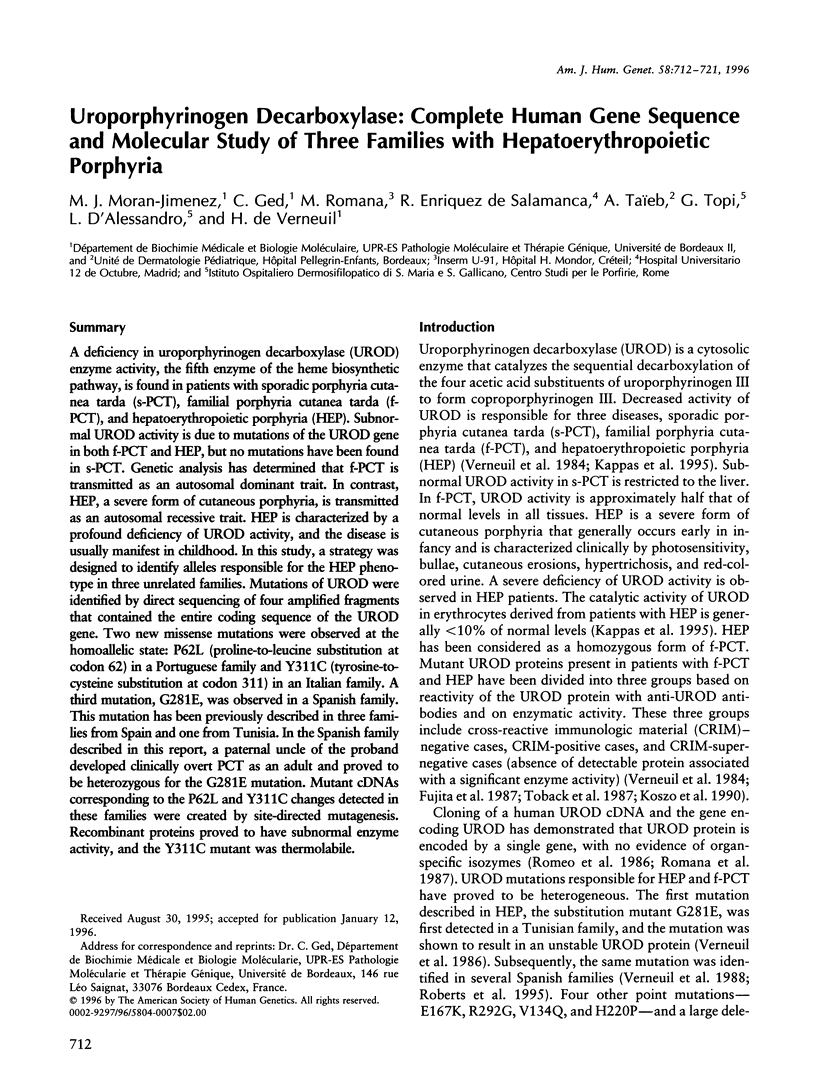
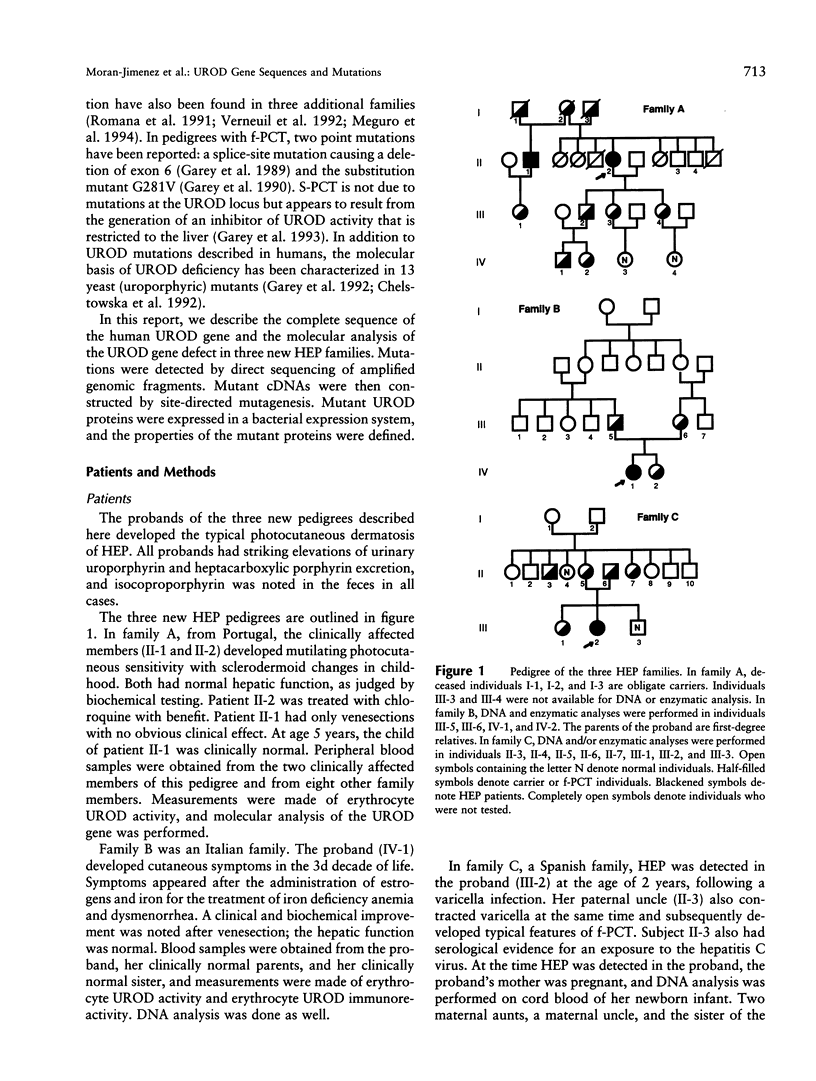
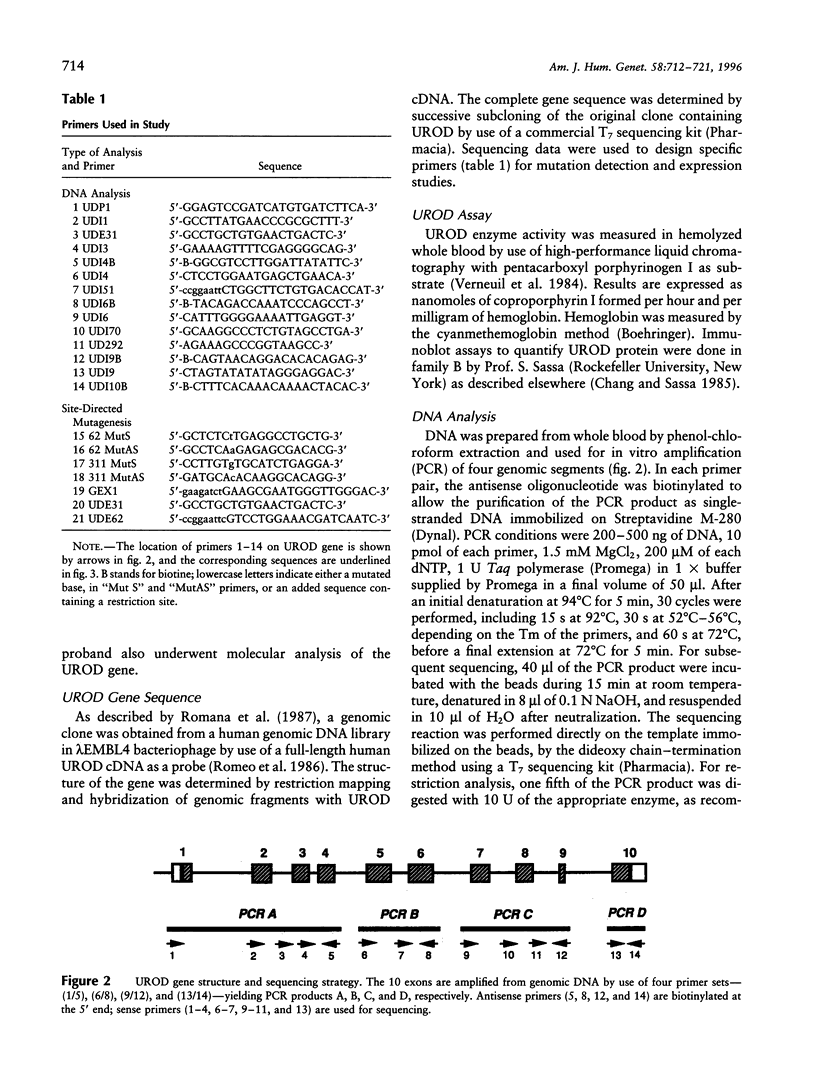
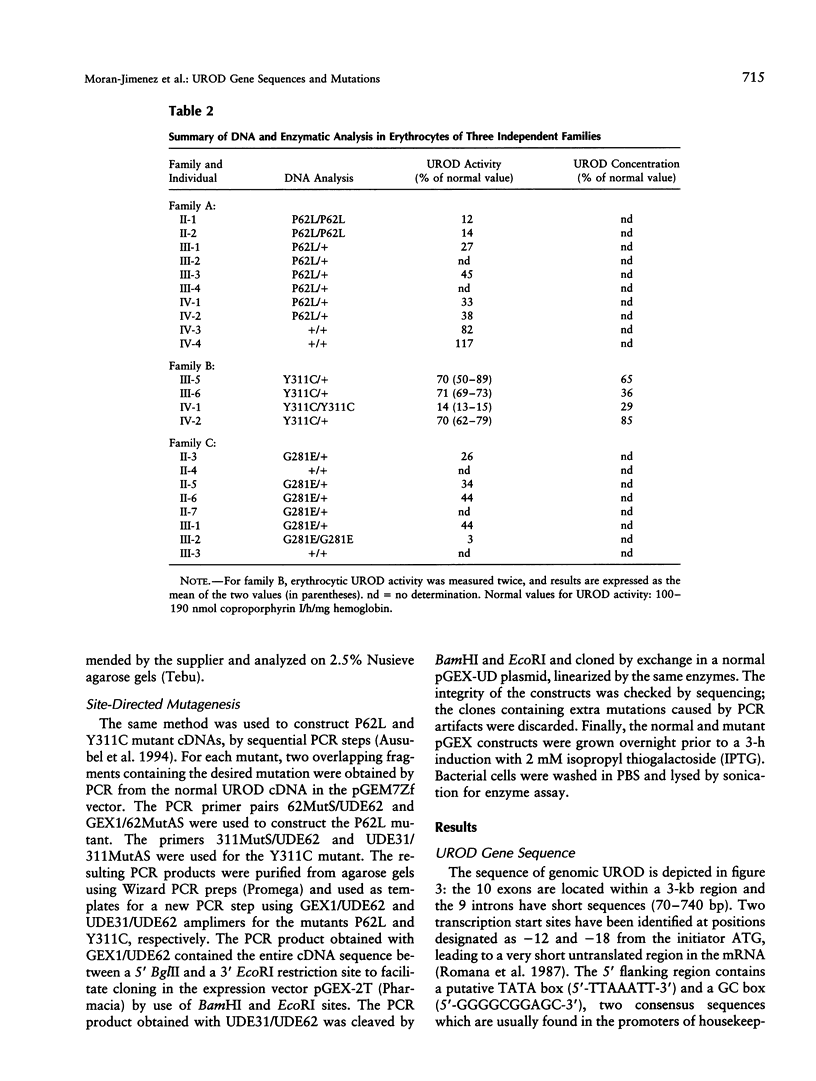
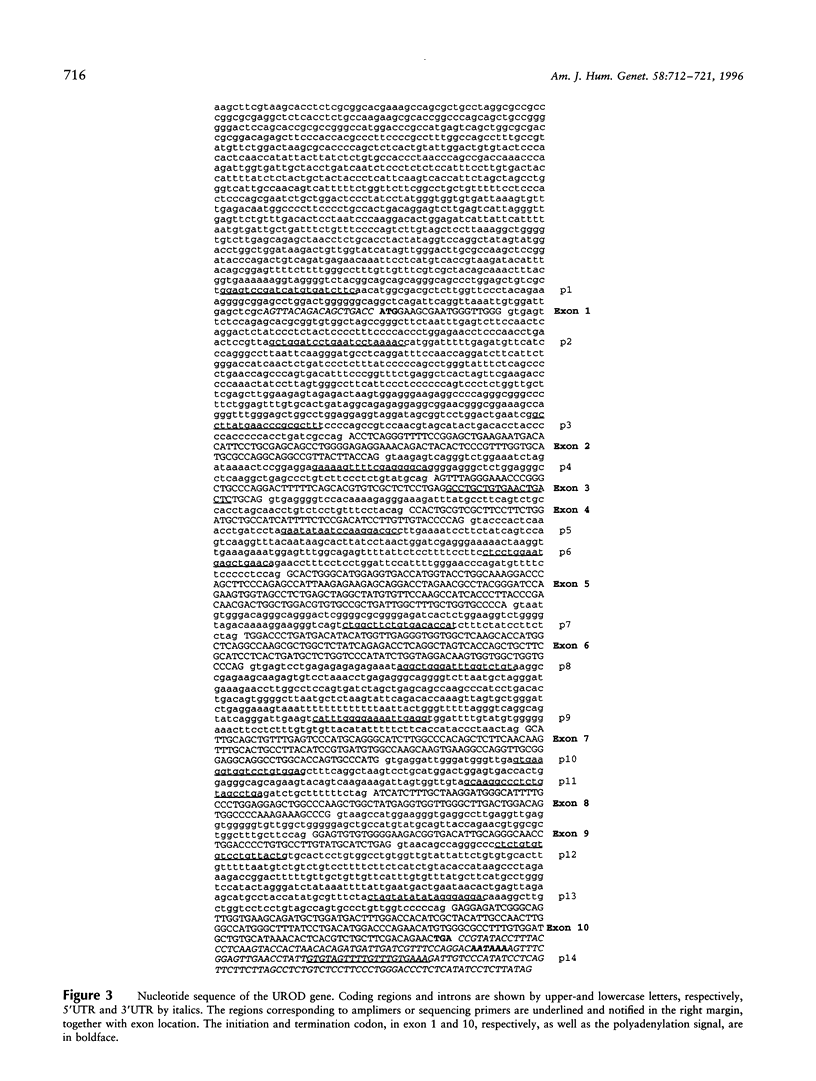
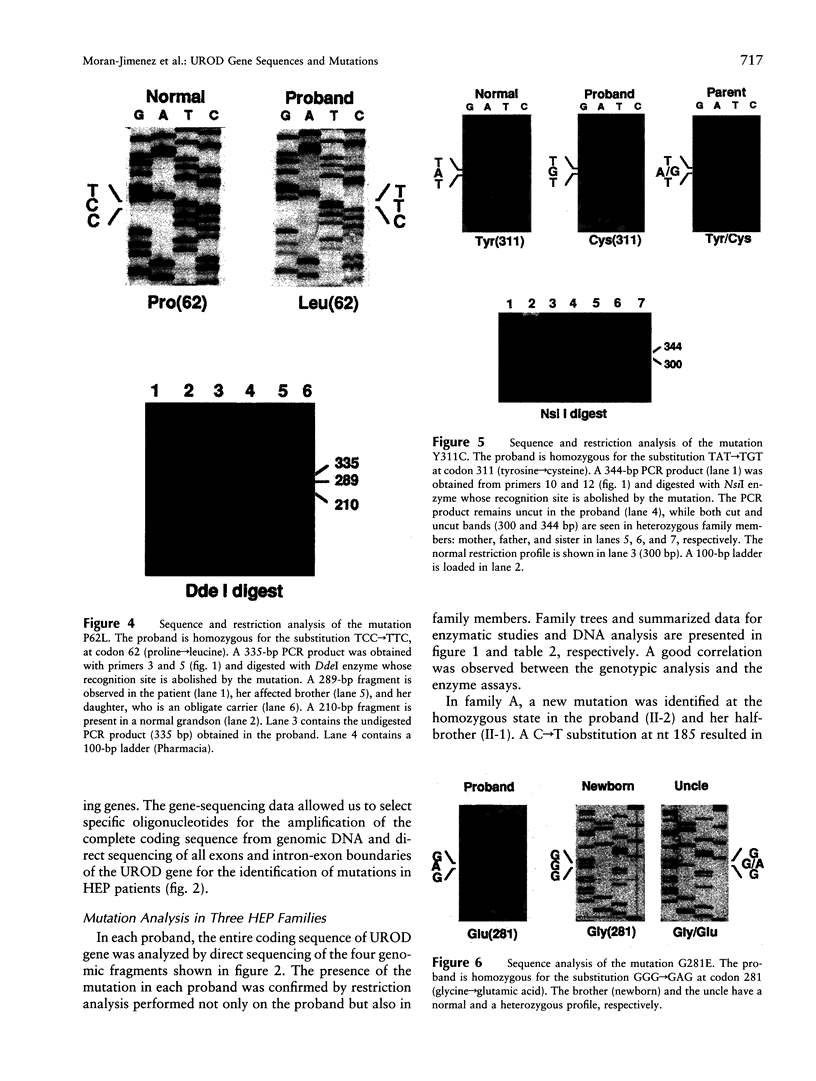
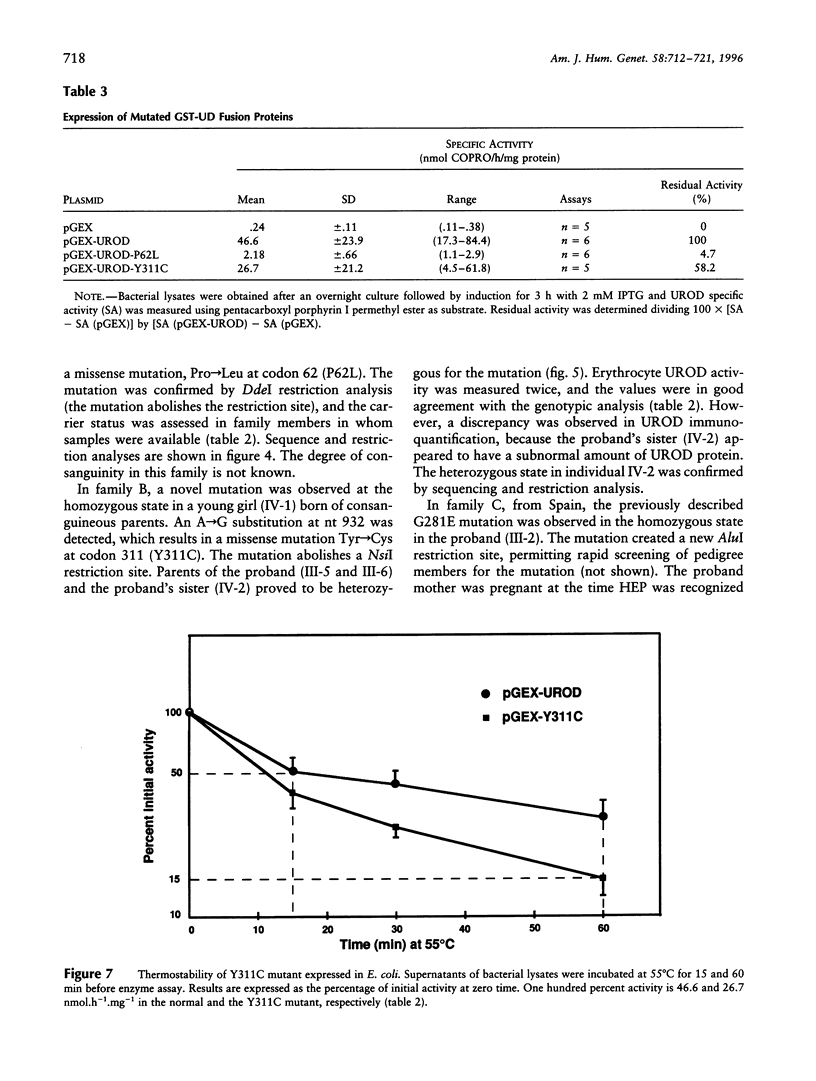
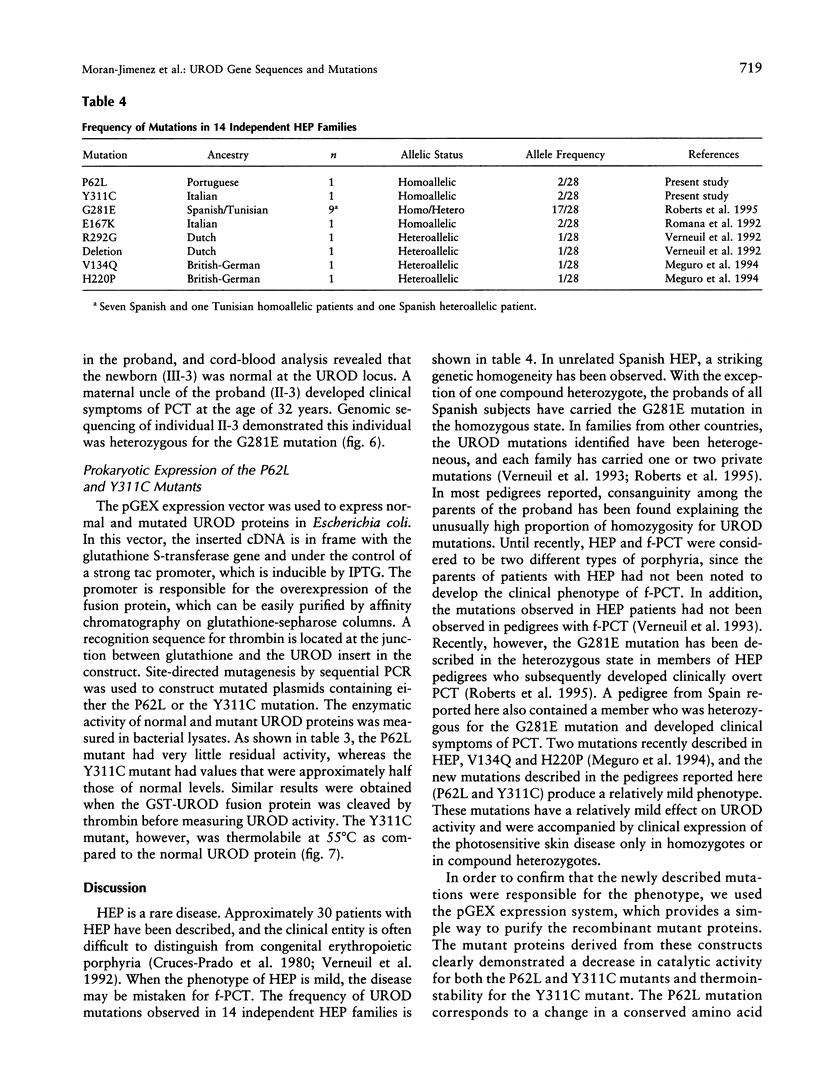
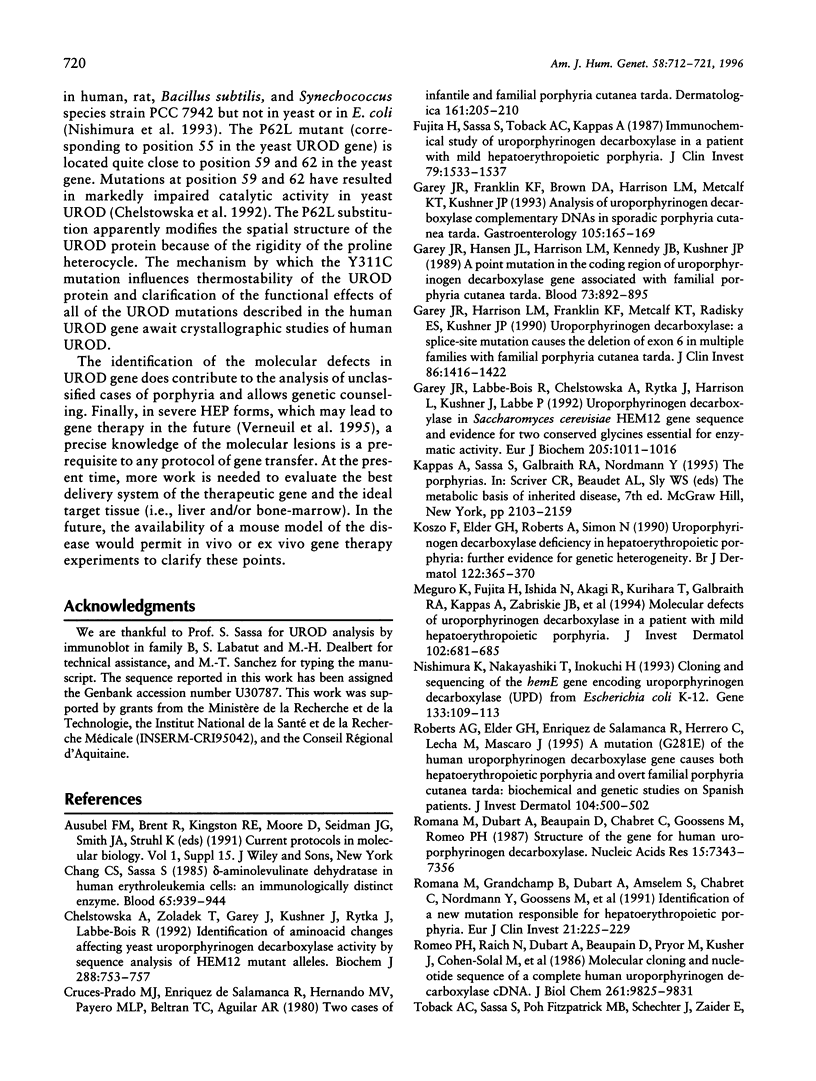

Images in this article
Selected References
These references are in PubMed. This may not be the complete list of references from this article.
- Chang C. S., Sassa S. delta-Aminolevulinate dehydratase in human erythroleukemia cells: an immunologically distinct enzyme. Blood. 1985 Apr;65(4):939–944. [PubMed] [Google Scholar]
- Chelstowska A., Zoladek T., Garey J., Kushner J., Rytka J., Labbe-Bois R. Identification of amino acid changes affecting yeast uroporphyrinogen decarboxylase activity by sequence analysis of hem12 mutant alleles. Biochem J. 1992 Dec 15;288(Pt 3):753–757. doi: 10.1042/bj2880753. [DOI] [PMC free article] [PubMed] [Google Scholar]
- Cruces Prado M. J., Enriquez de Salamanca R., Verea Hernando M., Peña Payero M. L., Catalán Beltran T., Robledo Aguilar A. Two cases in infantile and familial porphyria cutanea tarda. Dermatologica. 1980;161(3):205–210. doi: 10.1159/000250359. [DOI] [PubMed] [Google Scholar]
- Fujita H., Sassa S., Toback A. C., Kappas A. Immunochemical study of uroporphyrinogen decarboxylase in a patient with mild hepatoerythropoietic porphyria. J Clin Invest. 1987 May;79(5):1533–1537. doi: 10.1172/JCI112985. [DOI] [PMC free article] [PubMed] [Google Scholar]
- Garey J. R., Franklin K. F., Brown D. A., Harrison L. M., Metcalf K. M., Kushner J. P. Analysis of uroporphyrinogen decarboxylase complementary DNAs in sporadic porphyria cutanea tarda. Gastroenterology. 1993 Jul;105(1):165–169. doi: 10.1016/0016-5085(93)90022-5. [DOI] [PubMed] [Google Scholar]
- Garey J. R., Hansen J. L., Harrison L. M., Kennedy J. B., Kushner J. P. A point mutation in the coding region of uroporphyrinogen decarboxylase associated with familial porphyria cutanea tarda. Blood. 1989 Mar;73(4):892–895. [PubMed] [Google Scholar]
- Garey J. R., Harrison L. M., Franklin K. F., Metcalf K. M., Radisky E. S., Kushner J. P. Uroporphyrinogen decarboxylase: a splice site mutation causes the deletion of exon 6 in multiple families with porphyria cutanea tarda. J Clin Invest. 1990 Nov;86(5):1416–1422. doi: 10.1172/JCI114856. [DOI] [PMC free article] [PubMed] [Google Scholar]
- Garey J. R., Labbe-Bois R., Chelstowska A., Rytka J., Harrison L., Kushner J., Labbe P. Uroporphyrinogen decarboxylase in Saccharomyces cerevisiae. HEM12 gene sequence and evidence for two conserved glycines essential for enzymatic activity. Eur J Biochem. 1992 May 1;205(3):1011–1016. doi: 10.1111/j.1432-1033.1992.tb16868.x. [DOI] [PubMed] [Google Scholar]
- Kószó F., Elder G. H., Roberts A., Simon N. Uroporphyrinogen decarboxylase deficiency in hepatoerythropoietic porphyria: further evidence for genetic heterogeneity. Br J Dermatol. 1990 Mar;122(3):365–370. doi: 10.1111/j.1365-2133.1990.tb08285.x. [DOI] [PubMed] [Google Scholar]
- Meguro K., Fujita H., Ishida N., Akagi R., Kurihara T., Galbraith R. A., Kappas A., Zabriskie J. B., Toback A. C., Harber L. C. Molecular defects of uroporphyrinogen decarboxylase in a patient with mild hepatoerythropoietic porphyria. J Invest Dermatol. 1994 May;102(5):681–685. doi: 10.1111/1523-1747.ep12374134. [DOI] [PubMed] [Google Scholar]
- Nishimura K., Nakayashiki T., Inokuchi H. Cloning and sequencing of the hemE gene encoding uroporphyrinogen III decarboxylase (UPD) from Escherichia coli K-12. Gene. 1993 Oct 29;133(1):109–113. doi: 10.1016/0378-1119(93)90233-s. [DOI] [PubMed] [Google Scholar]
- Roberts A. G., Elder G. H., De Salamanca R. E., Herrero C., Lecha M., Mascaro J. M. A mutation (G281E) of the human uroporphyrinogen decarboxylase gene causes both hepatoerythropoietic porphyria and overt familial porphyria cutanea tarda: biochemical and genetic studies on Spanish patients. J Invest Dermatol. 1995 Apr;104(4):500–502. doi: 10.1111/1523-1747.ep12605953. [DOI] [PubMed] [Google Scholar]
- Romana M., Dubart A., Beaupain D., Chabret C., Goossens M., Romeo P. H. Structure of the gene for human uroporphyrinogen decarboxylase. Nucleic Acids Res. 1987 Sep 25;15(18):7343–7356. doi: 10.1093/nar/15.18.7343. [DOI] [PMC free article] [PubMed] [Google Scholar]
- Romana M., Grandchamp B., Dubart A., Amselem S., Chabret C., Nordmann Y., Goossens M., Romeo P. H. Identification of a new mutation responsible for hepatoerythropoietic porphyria. Eur J Clin Invest. 1991 Apr;21(2):225–229. doi: 10.1111/j.1365-2362.1991.tb01814.x. [DOI] [PubMed] [Google Scholar]
- Roméo P. H., Raich N., Dubart A., Beaupain D., Pryor M., Kushner J., Cohen-Solal M., Goossens M. Molecular cloning and nucleotide sequence of a complete human uroporphyrinogen decarboxylase cDNA. J Biol Chem. 1986 Jul 25;261(21):9825–9831. [PubMed] [Google Scholar]
- Toback A. C., Sassa S., Poh-Fitzpatrick M. B., Schechter J., Zaider E., Harber L. C., Kappas A. Hepatoerythropoietic porphyria: clinical, biochemical, and enzymatic studies in a three-generation family lineage. N Engl J Med. 1987 Mar 12;316(11):645–650. doi: 10.1056/NEJM198703123161101. [DOI] [PubMed] [Google Scholar]
- de Verneuil H., Beaumont C., Deybach J. C., Nordmann Y., Sfar Z., Kastally R. Enzymatic and immunological studies of uroporphyrinogen decarboxylase in familial porphyria cutanea tarda and hepatoerythropoietic porphyria. Am J Hum Genet. 1984 May;36(3):613–622. [PMC free article] [PubMed] [Google Scholar]
- de Verneuil H., Bourgeois F., de Rooij F., Siersema P. D., Wilson J. H., Grandchamp B., Nordmann Y. Characterization of a new mutation (R292G) and a deletion at the human uroporphyrinogen decarboxylase locus in two patients with hepatoerythropoietic porphyria. Hum Genet. 1992 Jul;89(5):548–552. doi: 10.1007/BF00219182. [DOI] [PubMed] [Google Scholar]
- de Verneuil H., Ged C., Boulechfar S., Moreau-Gaudry F. Porphyrias: animal models and prospects for cellular and gene therapy. J Bioenerg Biomembr. 1995 Apr;27(2):239–248. doi: 10.1007/BF02110039. [DOI] [PubMed] [Google Scholar]
- de Verneuil H., Hansen J., Picat C., Grandchamp B., Kushner J., Roberts A., Elder G., Nordmann Y. Prevalence of the 281 (Gly----Glu) mutation in hepatoerythropoietic porphyria and porphyria cutanea tarda. Hum Genet. 1988 Jan;78(1):101–102. doi: 10.1007/BF00291248. [DOI] [PubMed] [Google Scholar]



